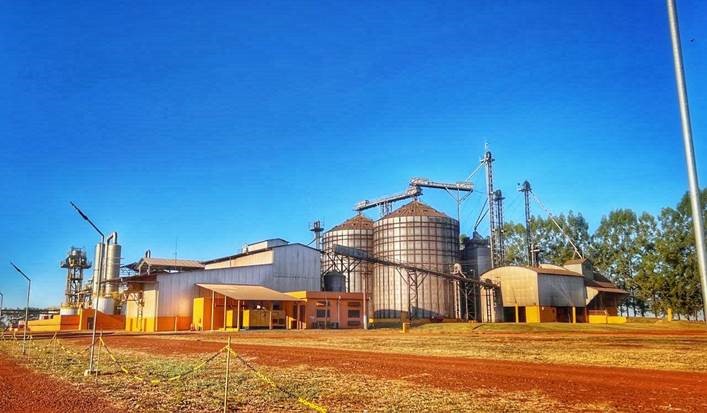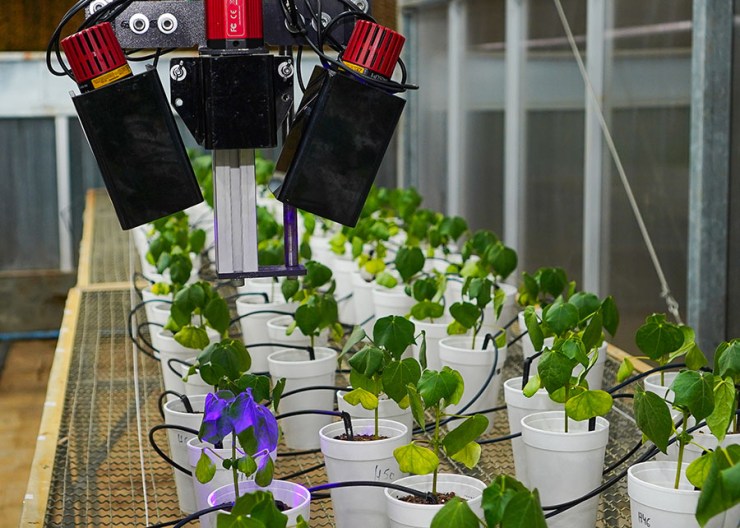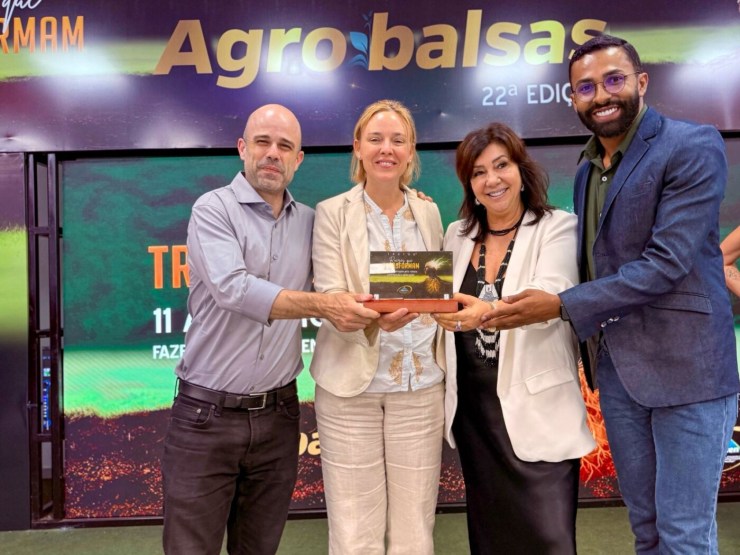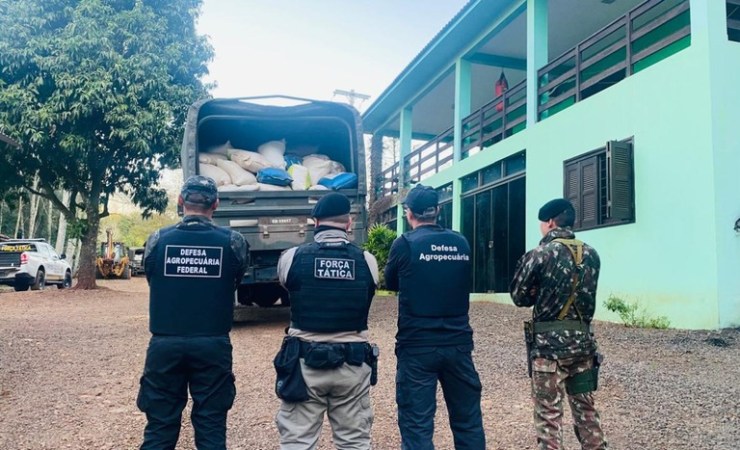Soybean cultivation was the one that grew the most in Brazil in the last five decades, so much so that from 1975 to 2025, production jumped from 9.89 million tons; 1974/1975 harvest to approximately 169 million tons (Conab), in the 2024/25 harvest. "We can say that the continuous increase in soybean productivity and the consequent expansion of its production was the result of the adoption of a set of technologies adopted by the Brazilian producer", highlights the general head of Embrapa Soja Alexandre Nepomuceno who mapped the Brazilian soybean producer in the last 50 years, at the opening of the 7th Seminar Challenges of Brazilian Leadership in the World Soybean Market, held on Tuesday (19) and continues with programming this Wednesday (20) in Londrina (PR).

Photo: Shutterstock
The crop's growth, in Nepomuceno's view, is a direct result of the tropicalization of soybeans—investment in genetic improvement to adapt the oilseed to Brazilian conditions, as well as technologies and recommendations that enabled soil correction and management of pests, diseases, and weeds. "There were many challenges that Brazilian producers were able to overcome with scientifically based technical recommendations, the use of appropriate machinery, and infrastructure improvements," he explains.
While the trajectory has been promising, what are the current and long-term challenges? For Nepomuceno, one of the areas for improvement is adding value to soybean production. Soybeans currently account for 6% of agribusiness's Gross Domestic Product (GDP) and generate, on average, 2.5 million jobs. "With value addition, we could quadruple GDP and generate jobs," Nepomuceno estimates.
According to him, value addition currently occurs through meat production, via animal feed, but oilseeds must be included in the transition from fossil fuels to green chemistry. "We can use, for example, soybean oil to produce plastic, rubber, asphalt, and many other products, with investments in science and technology, as the United States is already doing," Nepomuceno explains. "The technological revolutions we are experiencing have the potential to positively impact agribusiness, whether through digital agriculture, artificial intelligence in gene editing, RNA interference, and many other innovations," he assesses.
Challenges of the evolution of soybean farming
During the seminar, a panel discussion was also held to discuss the evolution of Brazilian soybean production by production region. Researcher Décio Gazzoni, from Embrapa Soja, mapped productivity and analyzed regional fluctuations.
Today, approximately 20 Brazilian states produce soybeans under different conditions, using different cultivars and production systems. Furthermore, Gazzoni explains that rainfall patterns vary, as do the adoption of technologies and the provision of technical assistance.

Photo: Daiane Mendonça
According to Gazzoni, productivity in Brazil—from 1970 to 2000—grew with little fluctuation. However, due primarily to climate change, productivity is currently experiencing greater volatility, even in traditional soybean-producing regions like the Central-West. "This is because we had much greater predictability of rainfall patterns 15 or 20 years ago than we do today, so the risks are greater," he assesses. "The southern region and southern Mato Grosso do Sul have suffered from water deficits and high temperature surges, which have significantly affected productivity in this region," he emphasizes.
In the researcher's view, the solution lies in technological investment, public policies, and joint, integrated action across the production chain. "Nothing will be resolved quickly: continued long-term investment is needed, especially in soil management and genetic improvement," he reflects. "And we face other challenges, some circumstantial and cyclical, others structural, such as logistical issues," Gazzoni assesses.
Producers' view
Fabrício Rosa, director of Aprosoja Brasil, presented the scenarios that impacted soybean production and productivity in recent harvests. Rosa tHe also pointed to climate change—drought during three harvests and flooding in Rio Grande do Sul in 2024—as a determining factor in Brazil's crop failures. "Despite this, domestic supply was not affected, nor was our export commitment. This is because Brazil is continental in size, and if there is a failure on one side, we can compensate on the other, resulting in robust harvests," he explains.
In addition to climate issues, Rosa highlighted challenges for producers, including global market and economic factors such as the COVID-19 pandemic and even wars in various regions of the world. "This scenario has led to delays in the commercialization of some crops. In this sense, we understand that producers need to improve their property management, especially financial management, especially cash flow and investment control," Rosa points out.

Photo: Luiz Henrique Magnante
Another challenge Rosa raised was the increase in soybean production costs due to the pandemic, as well as the increase in pesticide costs. "Proportionally, pesticide costs were typically 20% of the production cost, and now they're close to 40%," she reports. "The cost of seeds, for example, which was around 5%, has now exceeded 10% of the production cost," she calculates.
Rosa also says that Aprosoja has been working to improve Brazilian legislation, whether by passing laws governing the use of pesticides or the production of bioinputs. "Using biologicals is an alternative for producers, which, in some cases, can reduce chemical costs by up to 50%," she highlights. "We're also discussing the modernization of the cultivar law, as well as seeking to financially support producers, especially in Rio Grande do Sul, through debt renegotiation tools," Rosa explains.
Adding value to cooperatives
Another point under debate was the role of cooperatives in soybean production, a topic led by Robson Mafioletti, superintendent of the Ocepar System (Organization of Cooperatives of Paraná). According to him, approximately 50% of the Brazilian harvest is managed by cooperatives, which have more than 9,000 professionals working alongside producers—approximately 240,000 soybean farmers. "Our role is to bring the best technologies to our members, which is why cooperatives have research stations to validate the most appropriate solutions for them," explains Mafioletti. "Today, there are many cultivars and technologies available, and the cooperative plays a fundamental role in guiding decision-making," he assesses.

Photo: Jose Fernando Ogura
Furthermore, over the past 20 years, Mafioletti emphasizes that cooperatives have invested in industrializing the production process, adding value to the production of soybean meal and oil to foster the meat production chain. "Of the total soybeans produced by cooperatives, 25% is directed to agribusiness. This agribusiness is very important because it generates income stability throughout the year," Mafioletti reflects.
The 7th Seminar on Challenges of Brazilian Leadership in the World Soybean Market is promoted by Embrapa Soja in partnership with the Brazilian Association of Vegetable Oil Industries (Abiove), the Association of Grain Companies of Brazil (Acebra), the National Association of Cereal Exporters (Anec), the Association of Soybean Producers of Mato Grosso do Sul (Aprosoja-MS), the Association of Soybean Producers of Paraná (Aprosoja PR), the Association of Supervisors and Controllers of Brazil (ASCB), the National Confederation of Agriculture (CNA), the Organization of Brazilian Cooperatives (OCB) and the National Union of the Animal Feed Industry (Sindirações).




